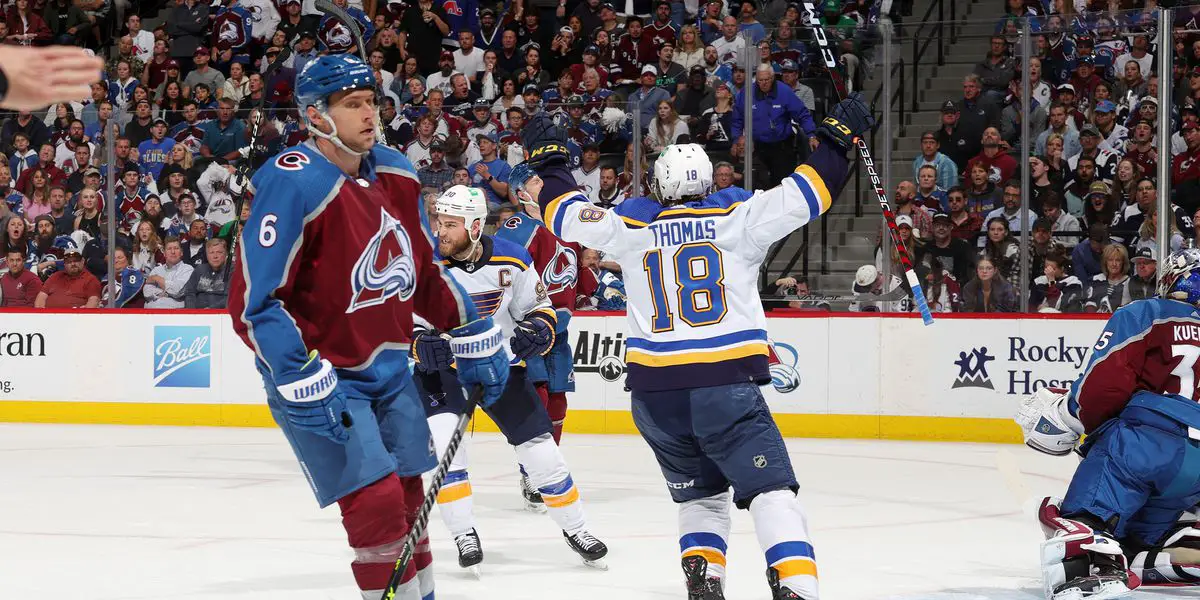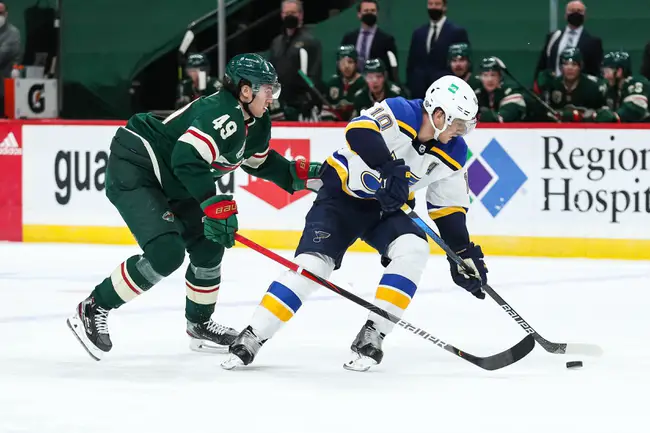
Just before the NHL Playoffs started, on the BlueNote Fan Report, a vodcast I host, my co-hosts and guests brought it up many times that what happens in the regular season does not matter in the playoffs. On the other hand, I felt like this might not be valid for the St. Louis Blues.
The Blues would face the Minnesota Wild in the first round, and dating back to February 2019, St Louis held a 13-1-2 advantage over the state of hockey. Both teams were fighting for home ice in the number two vs. number three matchup. These were also two of the hottest teams in the last month of the season.
Both teams finished the month of April 12-2-2 with a points percentage of .813. While the Wild would claim the number two seed and home ice in the first round, I still felt the Bluenote was the better team.
St. Louis was the third-best team in the major offensive categories, including Goals For and GF/PG. 309 and 3.77. Besting both teams ahead of them in the division race, the Colorado Avalanche, and the Wild.
The Blues set a franchise record while scoring four or more goals in 12 straight games, going 11-0-1. St. Louis scored four goals or more 46 times during the regular season. (40-5-1). In games where they scored three goals or fewer, 9-17-10.

The Blues have become an offensive juggernaut. While it might be to the dismay of many fans, they are not the hard-hitting, wear-you-down, keep coming at you team that won the Stanley Cup in 2019.
We all hear about how the defense gets turned up in the playoffs, and while that may be true in most years, it may not be this season. The league played 1312 games during the 2021-22 season, scoring 8150 goals for a per-game average of 6.211.
If conventional wisdom is correct, that number will decrease now that the tournament has started. Through games played on May 19, there have been 57 games. The puck has found the twine 364 times. That is a per-game total of 6.385. The boys are scoring more, not less.
The Blues are 5-3 in the playoffs so far. The Note has scored four, five, five, five, five, and four markers in the five wins: the three losses, two, one, and two. When the Blues’ offense is ticking, they win.
While this has become a team that lights the lamp, they have also become something “Special.” The Blues are tied with the Toronto Maple Leafs for the best special teams in the league during the 82-game season. Overall Special Teams (OST) accounts for the Net Power Play and the Net Penalty Kill. The Net adds in or takes away shorthanded goals for and against.
St. Louis had the second-best Net PP% and Net PK% in the league for a total of 113.1. during this postseason, they have scored a power-play goal in all eight games while allowing only five goals with a man in the sin bin.
The Blues’ OST of 117.3 trails only the eliminated Washington Capitals.
Blues get defensive and stingy.
To succeed in the NHL’s second season, your team normally needs to improve in at least one area. The Blues have improved in two significant ones. Goals Allowed Per-Game and Goaltending.
In football, there is an old saying that the best offense is a great defense. This means that if your defense can stop the other team’s offense, it will help your offense. A great defense keeps the other team off the board, and it gives your team a shorter field and opens up the playbook.
In hockey, the opposite is true. The best defense is a great offense. The offense can keep the other team from holding the puck, and it can score early and often to force the other team to shorten the bench and take more chances.
We have seen this both in the regular season and the playoffs for the Blues. As I mentioned above, the Blues only won 9 games when scoring three goals or fewer. On the surface, many in the hockey community blamed the defense, saying this was one of the Blues’ weak points.
I felt the defense had not played as poorly as everyone thought and was worried that a major change at the trade deadline could interrupt the team’s identity. GM Doug Armstrong proved why many fans of the BlueNote say, “In Army We Trust.”
Armstrong made a trade with the Detriot Red Wings for Nick Leddy, giving up Oskar Sundqvist and Jake Walman. This trade worried me because of how vital Sunquist was to the PK. Leddy was seen as more of an offensive defenseman, and it turned out to be just what the Note needed.
In the playoffs, the Blues have gone from 2.91 GA/PG to 2.50. When they score, they don’t allow the other team to score.
Binnington takes over

The other change is also the elephant in the room. Jordan Binnington has found the mojo from the 2019 playoff run. Binnington did not have an excellent regular season and was replaced by Finnish netminder Ville Husso.
While Husso struggled to play the “better” teams during April, Binnington shined in his starts between the pipes. During April, he was 5-1-0 with a .901 s% and a 3.08 GAA. While not the best numbers, you saw how he got better each game.
Husso blanked the Wild in the playoff opener, but he allowed two goals on the first three shots in the next two. He could not make the stops you are not supposed to make. Binnington, since replacing him, has not allowed more than three goals in a game, and that was a 54-shot overtime game.
The Blues are a good team, and the numbers back this up. Their play on the ice passes the eye-test for me, and while the Avalanche are the media’s darling, the Blues should give them all they can handle, including their first loss in these playoffs.
Discover more from Inside The Rink
Subscribe to get the latest posts sent to your email.




Good read, backed up your points w/ stats. I enjoyed it Guy!